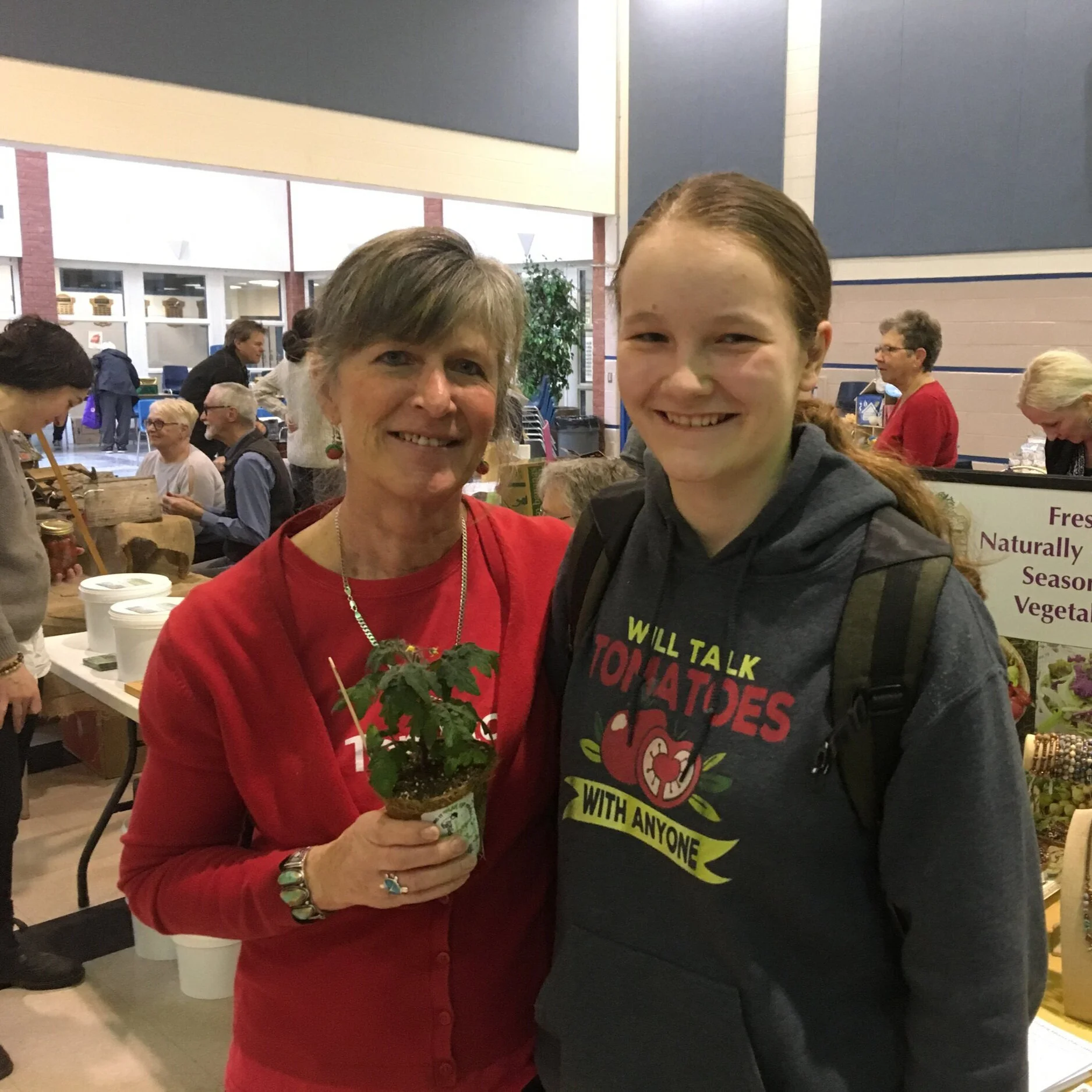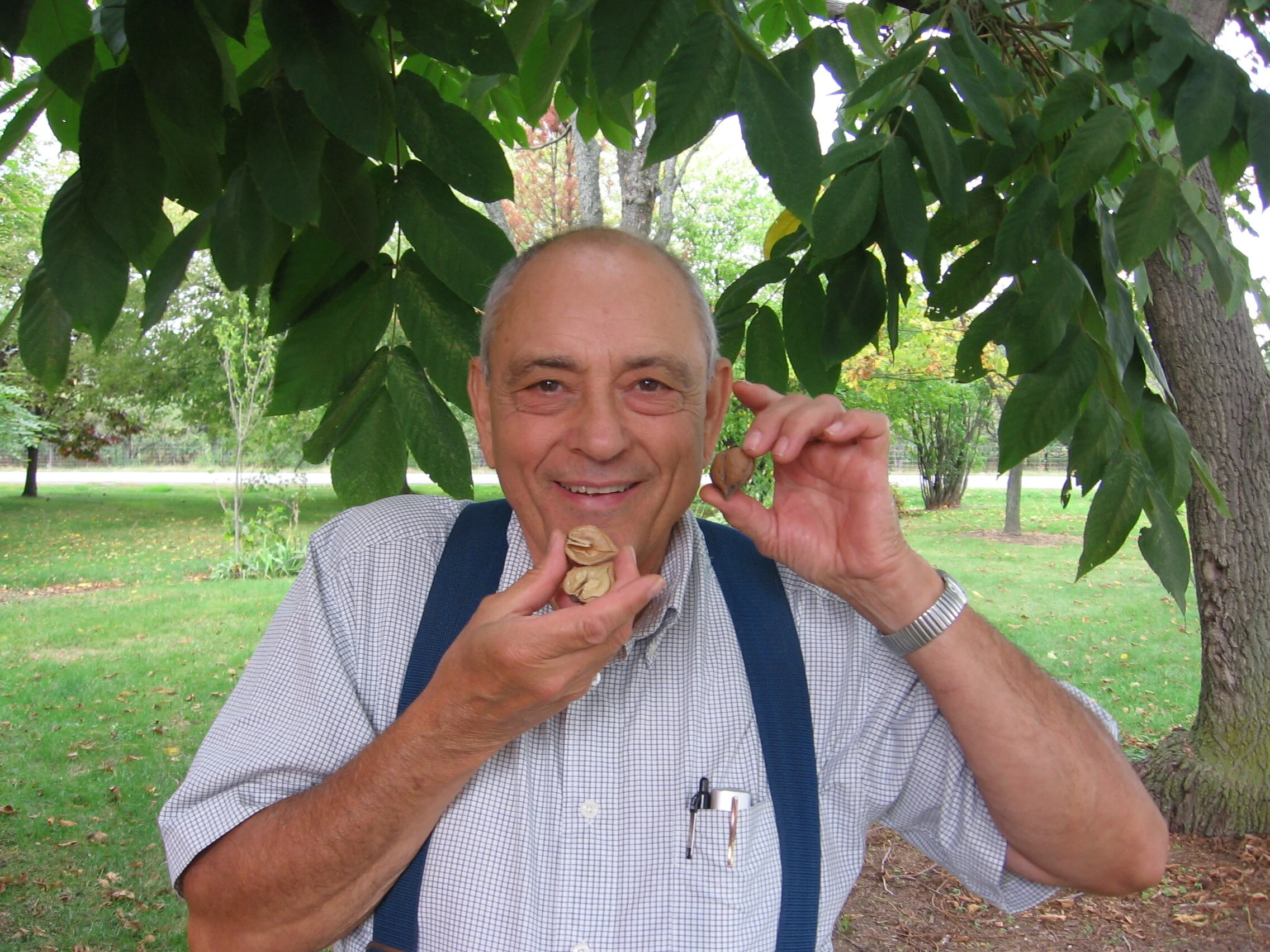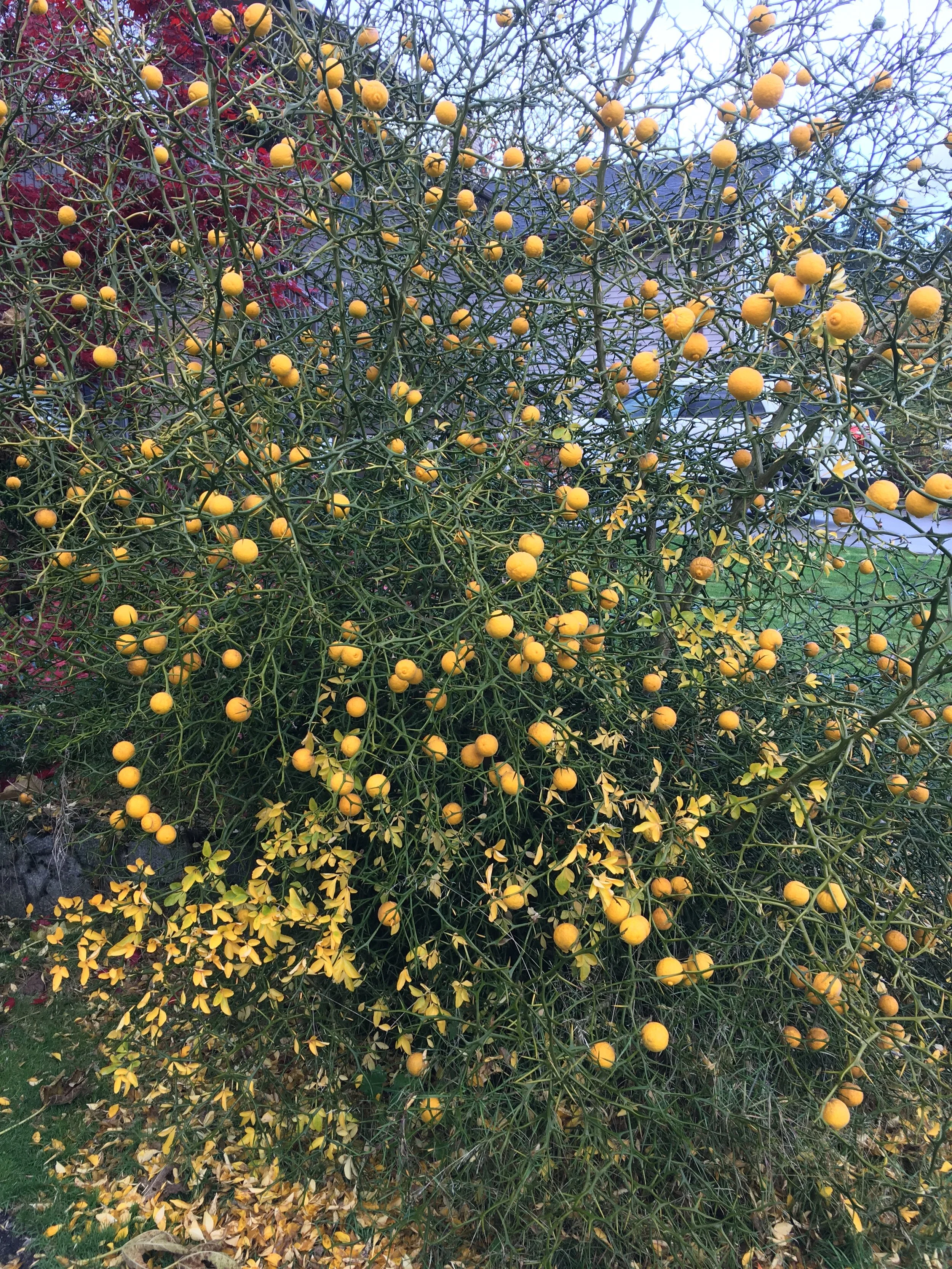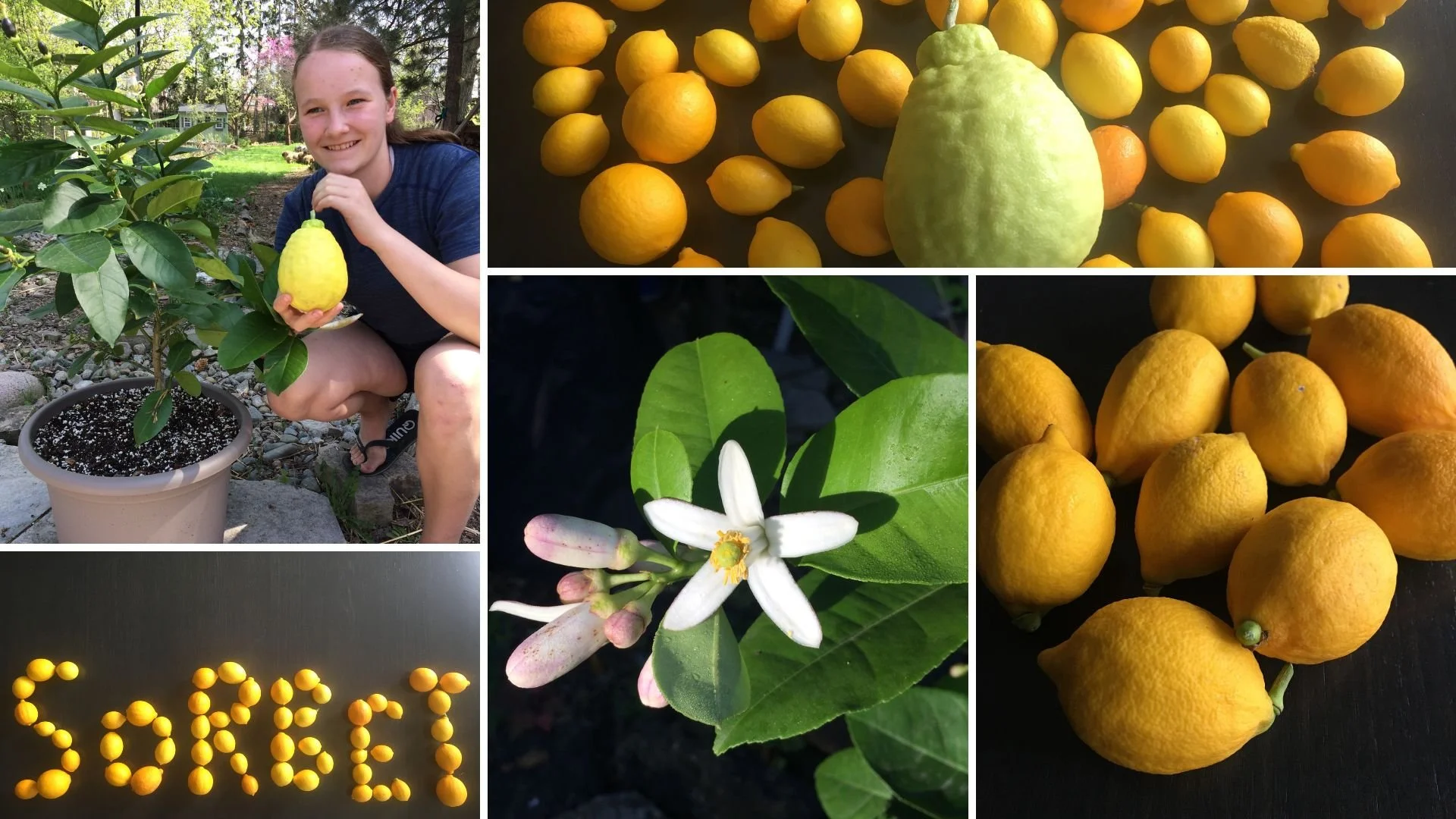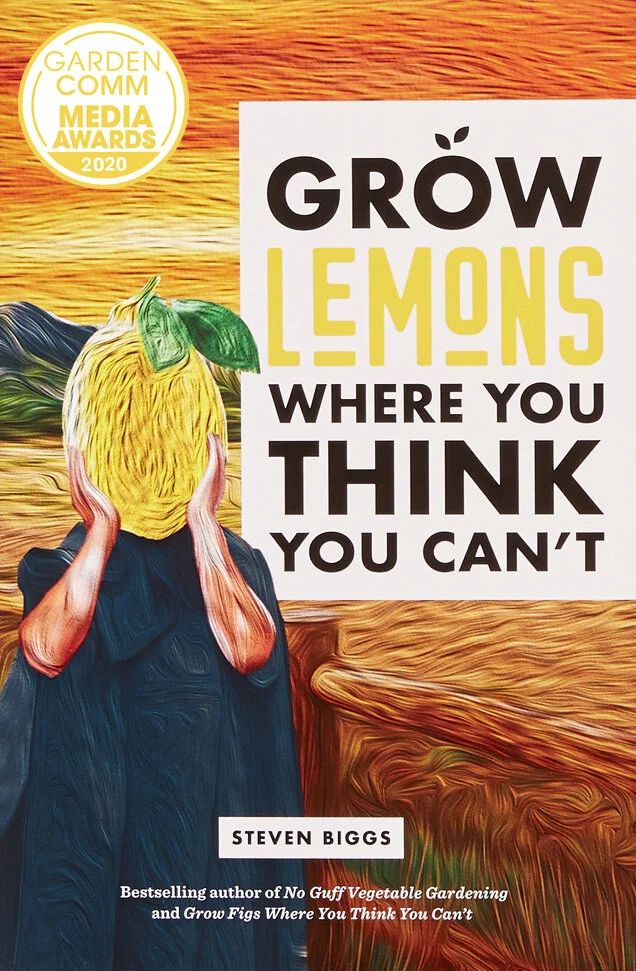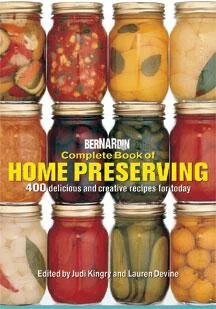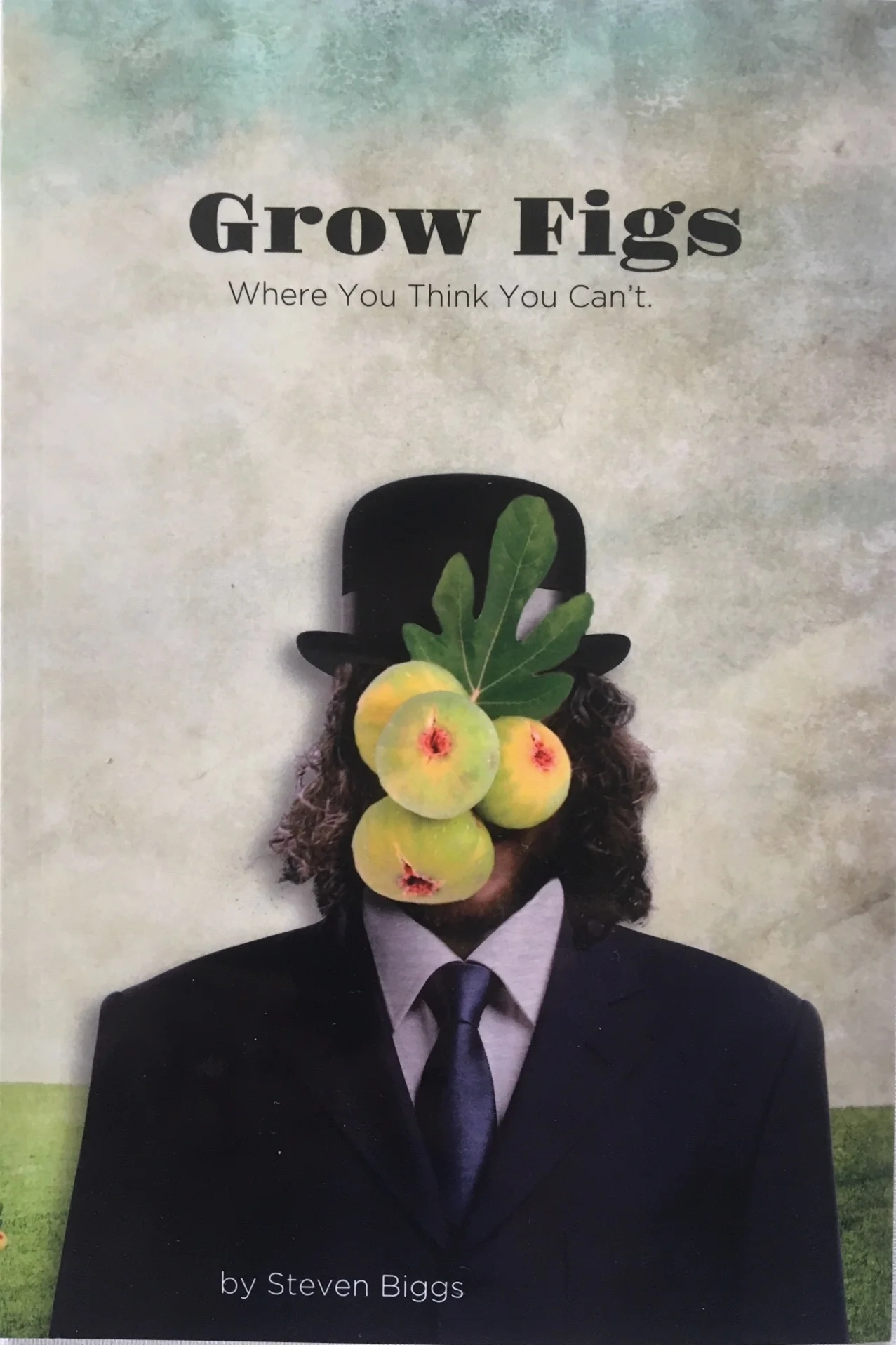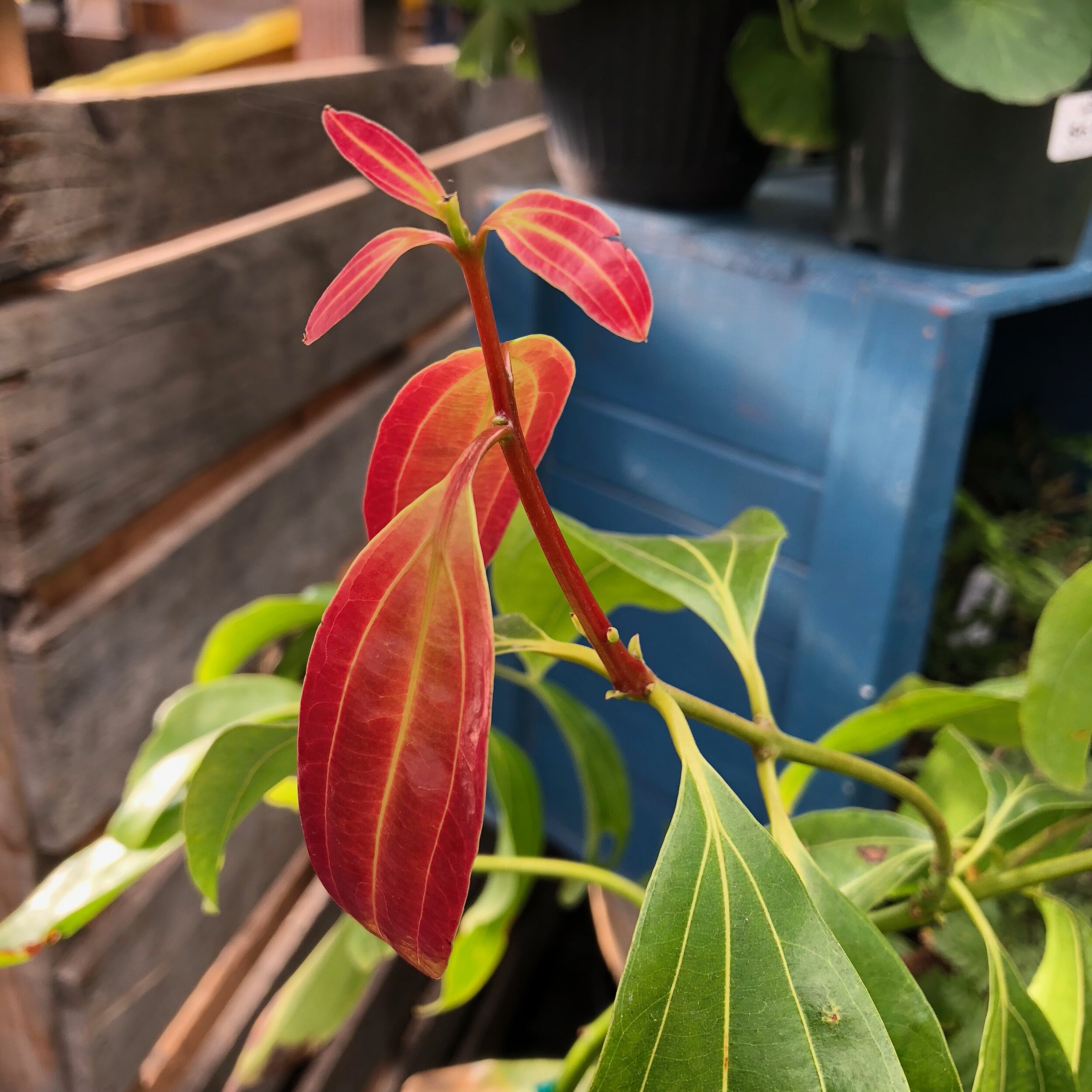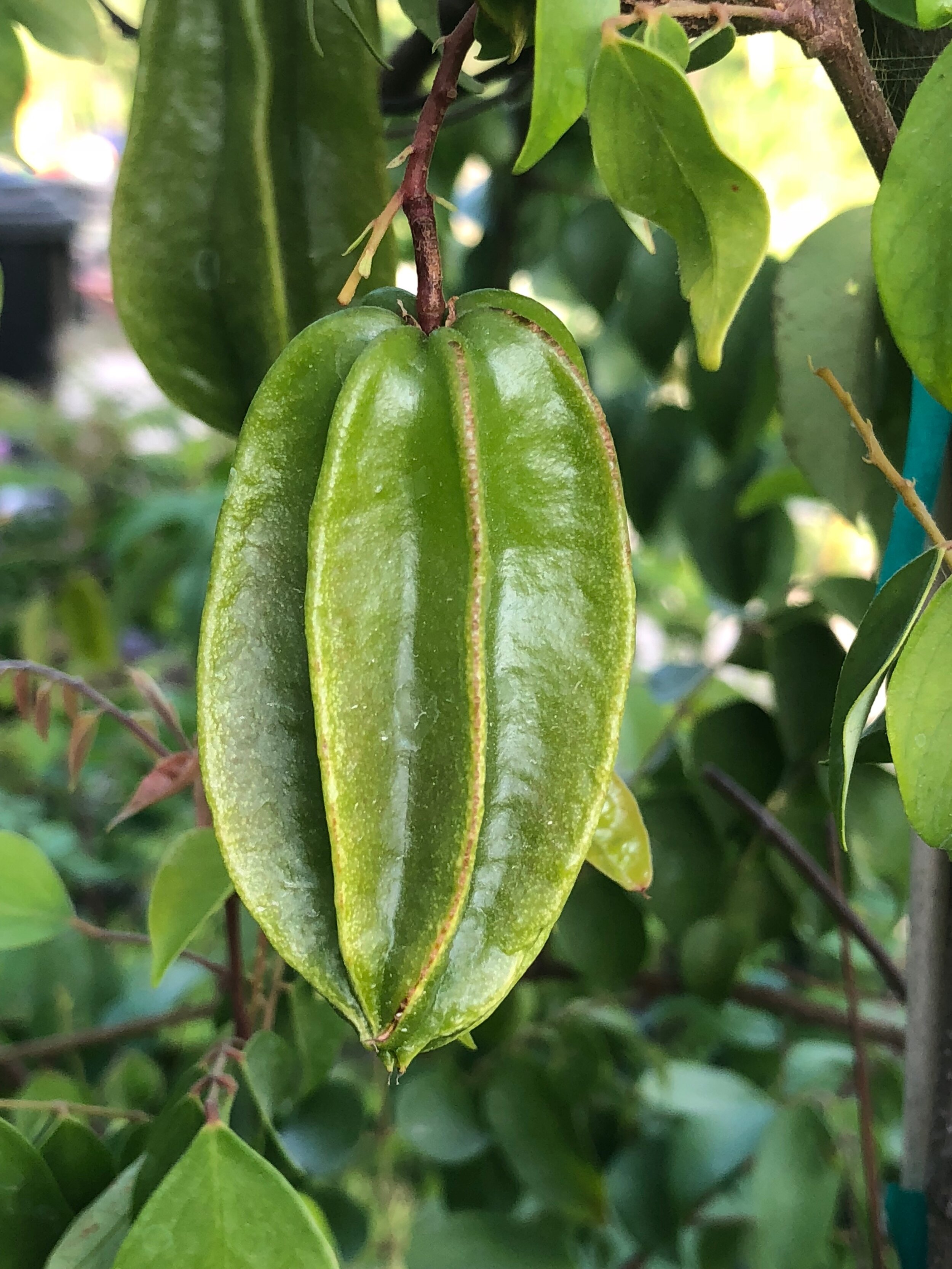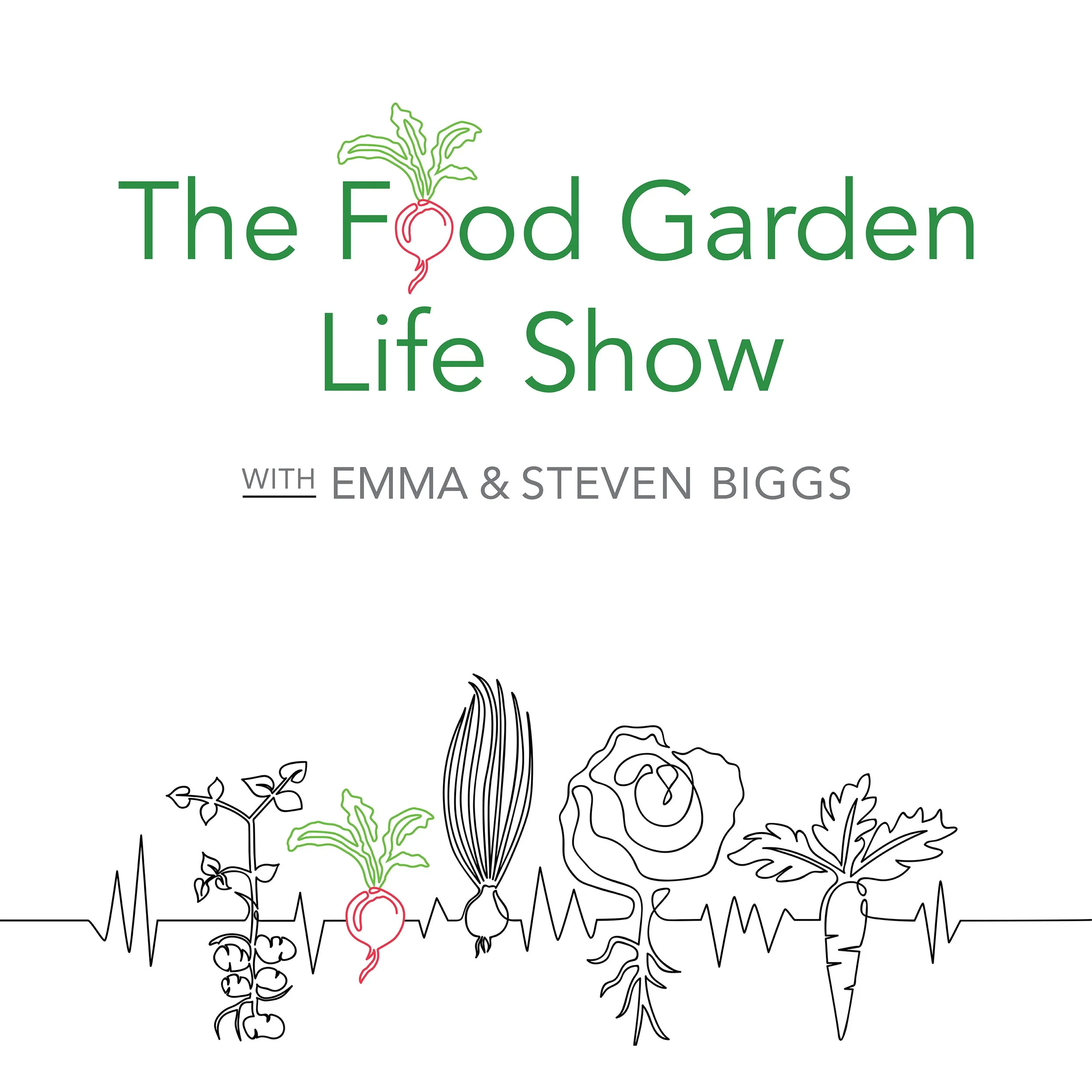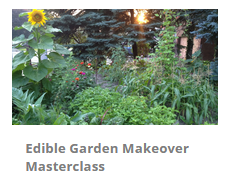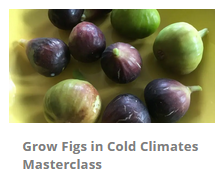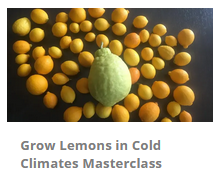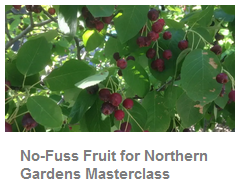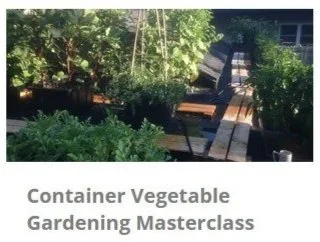Canadian Garden Zones vs. US Garden Zones
Helen Battersby of torontogardens.com
We are joined by Helen Battersby, a Toronto garden blogger, garden coach, and publisher of the Toronto & Golden Horseshoe Gardener’s Journal.
She explores a topic that a lot of new gardeners are not even aware of—that there are different garden-zone systems used in Canada and the USA.
Always eager to push zone boundaries, Battersby finds that many gardeners live in a state of “zone denial.”
Garden Zones
Battersby talks about the difference between the Canadian and American garden zone systems—both of which provide gardeners with a zone number to use when selecting hardy plant material. The lower the number, the colder the garden zone.
She points out that while her garden is a zone 6 using the Canadian system, it’s a zone 5 using the American system.
The Canadian system uses a number of variables including lowest mean temperature of the coldest month, highest mean temperature of the hottest month, precipitation, and the number of frost-free days.
The American (U.S. Department of Agriculture, or USDA) zones are based solely on average annual minimum temperatures.
She likens the Canadian system to a Betamax; and the US systmem to the VHS.
TorontoGardens.com
Battersby and her sister, Sarah, run the award-winning blog torontogardens.com.
They started the blog at a time when a lot of Canadian gardening magazines were folding, with a goal of filling the gap left by the loss of the gardening magazines.
The Toronto & Golden Horseshoe Gardener’s Journal
The journal, in its 29th year, was started by Margaret Bennet-Alder. She entrusted the publication of the journal to the Battersby sisters when she was 90.
The journal was born out of tragedy. Bennet-Alder’s son David was diagnosed with schizophrenia. To track his medications and appointments, he created a booklet that had a pair of pages for each week. She saw his book with its seven weekdays, along with an empty eighth space. She decided to use that empty space for garden tasks. And so was planted the seed for The Toronto Gardener’s Journal.
Her son helped her refine the design and taught her how to use software for the creation of the first print run of 500. It became a meaningful project for the both of them.
Growing Perennial Vegetables
We chat with Ben Caesar about perennial vegetables and salad greens. Caesar, who runs Fiddlehead Nursery, specializes in perennial edibles.
He says that in Western cultures, annual vegetable crops are the norm. But with a shift in thinking, it’s easy to incorporate perennial vegetables into the diet.
That shift to perennial vegetables is good because not only can they be easier for gardeners to manage—they require less soil tilling, which means less release of carbon that’s locked up in the soil.
Top Perennial Edibles from Caesar’s Garden in 2020
Seedless sorrel is his all-time favourite this year, a very productive green that he recommends as a “bombproof groundcover”
Caucasian spinach is a little-known vine with excellent ornamental properties
Cutleaf coneflower is a native perennial that produces edible greens in the spring, and 6’ tall flowers in summer
Oxeye daisy, a common roadside weed in Ontario, is a European perennial that has naturalized, with leaves that he says are delicious
Patience dock has leaves that can grow up to 2’ long, but he says to use them when about 1’ long, fresh, cooked—or as a wrap as is often done with grape leaves
Garlic chives are often grown as ornamentals…and he suggests eating leaves and flowers
Bronze fennel has greens with a sweet, anise flavour, and seeds that can be eaten as a palate cleanser and used in pickles
Honewort is a shade-loving native perennial with leaves that Caesar says are delicious
Tips to get Started with Perennial Vegetables
Caesar says that if you already have a perennial garden, chances are that you might already be growing edible plants. Here are common edible plants that he says many people already have in their gardens:
Hosta
Solomon’s seal
Daylily
Stonecrop sedum
Creating New Tomato Varieties
Tomato expert Linda Crago with Emma at a seed exchange.
Tomato expert Linda Crago joins us to talk about how to create a new tomato variety.
At her Tree and Twig Heirloom Vegetable Farm in the Niagara Region of Ontario, she raises hundreds of varieties of tomatoes.
This past summer, Emma grew a couple of tomato varieties that Crago released. She tells us what she did to get them—and shares tips on creating new tomato varieties.
Accidental Crosses
“One was an accidental cross and I was delighted to see it,” says Crago as she talks about ‘TT Baby Blue.’
‘TT Baby Blue’ appeared on its own, from a tomato plant that self-seeded in one of her fields. She thinks that it’s a cross between a blue tomato and one of the currant-type tomatoes.
Crago says that she saved seeds from it and grew the seeds the following year, keeping seeds only from tomatoes that resembled the parent. She did this for six years, which she says is often how long it will take before a new variety becomes “stable.”
De-hybridizing a Hybrid Tomato
Crago says that a lot of people don’t save seeds from hybrid tomatoes because there is no knowing what those seeds will grow into. “You might get somethign you like,” she says.
A few years ago she saw a very interesting tomato at her local grocery store. She bought is so that she could save seeds from it. Those seeds gave her quite a great variety of plants. “I got multiple varieties; not many looked like the original tomato,” she says.
But one of those plants had tomatoes with a peanut-like shape that caught her eye. She grew and selected for that peanut shape for a number of years. Once it was stable, she named the variety ‘Zemoltt.’
More on Tomatoes
Backyard Breeding: Cold-adapted Watermelon, Red-Podded Peas, Tomatoes
Colorado gardener and backyard plant breeder Andrew Barney
We speak with Colorado gardener and backyard plant breeder Andrew Barney about his work developing red-podded peas, cold-adapted watermelons, and new tomato varieties.
Connecting with Other Breeders
Barney connects with other plant breeders through seed swaps, social media groups, and online forums.
He says many people who are interested in plant breeding and preserving plant varieties are happy to share plant genetics.
“If people have something exciting they’re willing to share it.”
Approaches to Breeding
With his pea breeding, barney manages the crosses. It means that he spends time pollinating.
There are also breeding approaches that require less effort, such as landrace-style breeding he's using for his watermelons. In this approach, a number of varieties are planted in the same plot, and cross-pollination is left up to pollinating insects. The job of the breeder is then to select which resulting melons are worth saving seeds from to grow the following year. He’s been working on his melons now for about 10 years.
He’s also involved in The Big Wild Tomato Breeding Project, which he explains is introducing wild tomato genetics. The results, he says, are encouraging, with some participants reporting tomatoes with new flavour profiles that are described as being similar to mango and pineapple.
Top Tip
His advice to would-be backyard plant breeders is, "Just try it!"
More on Tomatoes
Downtown Rooftop Edible Garden Gives a Breath of Fresh Air
Saskia Vegter, Urban Agricultural Co-ordinator at 401 Richmond
We’re joined by Saskia Vegter, the Urban Agricultural Co-Ordinator at 401 Richmond, a former industrial building that has been transformed into a cultural hub in a dense downtown Toronto neighbourhood.
Vegter, who previously worked in event management, felt drawn to work in horticulture.
"I just remembered the feeling of connection when my hands were in the soil.”
401 Richmond
401 Richmond is a former industrial building, built in 1899. Vegter explains that the currant owner restored the building to transform it into a cultural hub for artists and creative entrepreneurs.
Tenants currently include art galleries, a book publisher, a film festival, artists with studios, and a daycare.
The Rooftop Gardens
401 Richmond rooftop garden
The rooftop has three garden areas:
A deck-patio area, which includes trees and shrubs in containers
An extensive sedum green roof
The “mini farm,” which has fruit, vegetables, herbs, and flowers for cutting growing in containers
Tenants use the rooftop for meetings, lunches, to meditate—or just to get a breath of fresh air, says Vegter.
Children from the daycare often spend time on the rooftop, which provides the opportunity for activities such as herb tasting.
Rooftop Crops
Ultra-dwarf apple trees grow in the same containers as the chums (cherry-plums), with strawberry plants at the base
Luffa grows up the pergola
Planters with edibles are planned for edibility AND colour, using plants with ornamental properties
New to the garden this year is a fig tree
Wildlife on the Rooftop
Despite being on a rooftop in a downtown neighbourhood, Vegter says that there are lots of visitors. She laughs as she talks about the squirrel that left her gifts of half-eaten tomatoes during the summer.
She says that other wildlife includes swallowtail caterpillars, hummingbirds, honeybees, and ladybugs.
Profitable Small-Scale Farming
Small-scale farming expert JM Fortier joins us to talk about his road to profitable small-scale farming. He’s an innovator who is out to remake agriculture.
Fortier talks about his own farm, Les Jardins de la Grelinette, as well as his work in training a new crop of farmers at a model polyculture farm in Hemmingford, Quebec, Ferme des Quatre-Temps.
He hopes to connect with non-farmers too, so that they can have a window into the world of farming. He’s done that with a television show, and his newest project—a magazine.
Successful Small-Scale Farming
Fortier is quick to point out that a profitable small farm is not an oxymoron. In his book, The Market Gardener, he outlines the steps that he took to earn more than $100,000 from a 1.5-acre market garden. That figure has risen to over $200,000 today.
He notes that a key element to profitable small-scale farming is to manage expenses.
He says successful small-scale farmers share these traits:
Dedication
Entrepreneurial outlook
A strong sense of customer service
Ability to work with numbers and deal with accounting
Rock-Star Farmer
Fortier notes that there was a great response to the recent French-language television series Les Fermiers (The Farmers) which documented work at Ferme des Quatre-Temps.
The farmers, he says, became TV rock stars.
While celebrity is nothing new in culinary circles, he’s happy to see the growing interest in farming. And he’s not surprised, because he feels there’s a hunger for knowledge about food.
He notes that 95 per cent of the farmers-in-training he’s working with come from a background other than agriculture.
Connecting with Non-Farmers
The Market Gardener has sold more than 200,000 copies and been translated into 7 languages. Fortier says that the book appeals to would-be farmers as well as people who are simply interested in where food comes from.
His next project? A new magazine.
While many print publications are closing up shop, he says that—just like working with the soil—a print magazine is something that’s very tactile.
A return to small: A return to print—they work nicely together.
Getting Ready to Shop for Seeds
Heirloom vegetable grower and tomato expert Linda Crago joins us to talk about seed lingo, saving seeds—and sharing seeds.
An avid seed-saver, she concedes that she has a whole freezer dedicated to seeds alone.
Crago operates Tree and Twig Heirloom Vegetable Farm in the Niagara Region of Ontario. She also organizes an annual Seedy Saturday seed swap and event in her community.
Linda Crago with Emma at a Seedy Saturday
Crazy for Tomatoes
Every spring gardeners from far and wide trek to her farm for her annual Tomato Days sale—where she has transplants for over 500 tomato varieties.
Crago says there’s lots happening in the world of tomatoes—and that in the past 10 years there has been more change since people started growing them to eat.
Seed Lingo
Hybrid: Crago explains that hybrids can occur naturally. While some hybrids are known for disease resistance, hybrid varieties are not the best choice for home gardeners who want to save seed. That’s because seeds from hybrids won’t be like the plant they came from.
Heirloom: She says that heirlooms are varieties with a history and a story. They have been around for a long time; 50 years is a common guideline when calling a variety an heirloom.
Open Pollinated: These are stable varieties that give seeds like the parent plant (as long as they have not cross-pollinated with a nearby plant.) While all heirlooms are open pollinated, not all open-pollinated varieties are heirlooms.
Artisan: These are newer open-pollinated varieties with special taste or unique appearance.
Hybrid Heirlooms: This term is used by some seed companies to refer to hybrids that look like an heirloom. Crago explains that heirlooms are always open pollinated, making this a misleading label.
Crago points to newer open-pollinated varieties such as some of the blue tomatoes…they’re not heirlooms now, but who knows, maybe they will be in 50 years.
Saving Seeds
Crago says that it’s not necessary to buy new seed every year. Seeds for some crops, such as parsnip, do have a shorter life, but she says that with proper storage, it’s usually possible to get more than one year from a batch of seed.
If in doubt, she recommends doing a seed viability test. Simply put seeds in damp paper towel within a sealed bag, in a warm location. After a few days, check to see how many of the seeds have germinated.
“One of the ways we keep open-pollinated varieties in existence is by growing and eating them.”
Seed Exchanges and Seed Libraries
Crago says that the first seed library in Canada was in the nearby Grimsby Public Library.
She says it’s not uncommon to hear stories at seed exchanges: seeds often come with the story of how they were brought from another country by a relative—and the people sharing them are hoping that someone will keep the variety going.
“The stories are the best and the varieties you get are the best.”
Elderberry: Forgotten Fruit Makes a Comeback
In our second chat with Kentucky farmer and author John Moody, we talk about elderberry.
Moody is the author of The Elderberry Book, in which he explores not only the cultivation and use of elderberry, but also it’s rich history.
Long History of Elderberry Use
Moody told his publisher, “I want to write a book about elderberry because it’s been almost 1,400 years since there was a book written about only elderberry.”
With his knowledge of Latin, Greek, and Hebrew, Moody has been able to explore its use and lore in ancient texts.
There is a lot of story and lore involving elderberry in more recent times too. He points out that they can be found in Harry Potter, Monty Python, Shakespeare—and are even the subject of a Hans Christian Andersen fairy tale.
Elderberry on his Farm
Moody says that on his farm, each of his children is required to have a homestead business. His daughter Abby chose elderberry syrup—and the business has done extremely well.
Elderberry is in demand: He says that there is currently not enough elderberry to supply demand in North America.
Using Elderberry
Elderberry recipe from a calendar made in Nova Scotia, Canada in 1793
The elderberry fruit has many uses, including juice, tea, jelly, pie, and marinades.
The flowers can also be consumed, and are frequently used in teas, salads, and fritters.
But Moody says there is a rich history of use of medicinal use of other parts of the elderberry plant.
Top Tips for Growing Elderberry
Moody’s top three tips for growing elderberry:
Grow a number of varieties to determine which will be the most productive in your conditions
The least expensive way to get plants is by rooting hardwood cuttings
Elderberry is a moisture-loving plant, so give it a wet location, for example, near a downspout
From Urban Junk-Food Junkie to Farmer
We chat with Kentucky farm educator and homesteader John Moody to learn how a junk-food-eating city kid ended up as a farmer and farm educator.
Moody, who had been heading towards a career in academia so that he could teach, says that in hindsight, “I got a farm so I can teach.”
Food-Buying Club
After a health scare, Moody and his wife began to change their eating habits, buy more whole foods and locally grown foods.
With the change in food buying habits, he noticed that his food bill went way up. “The farmers aren’t getting any of this money I’m spending,” he thought.
That led Moody and his wife to source food directly from farmers and start a food-buying club, Whole Life Buying Club.
Getting into Farming
His interest in growing food evolved out of his interest in healthy food—especially after meeting farmers who were sceptical about cutting their use of external inputs.
So he set out to do it himself.
“I bought a farm, soil not included,” says Moody as he talks about building soil from scratch on a degraded piece of land.
An Outsider’s Perspective
Moody talks about how, on a small farm such as theirs, 30 bottles of specialty elderberry syrup brings in roughly the same amount as what a conventional farmer might get from an acre of corn.
Growing Nuts in Cooler Climates
In this interview that first broadcast live on the Food Garden Life Radio Show in 2018, we chat with nut-growing expert Ernie Grimo from Grimo Nut Nursery in Niagara-on-the-Lake, Ontario.
Nut expert Ernie Grimo
When Grimo set out to grow nuts in his yard, he couldn’t find local nurseries selling plants.
That was the beginning of his foray into collecting, breeding, and selling nut trees.
“When I had 100 trees in my backyard, it was time to find somewhere else to put them,” he says.
Cold-Adapted Nuts
At his farm and nursery in Niagara, Grimo grows a wide variety of cold-adapted nuts including:
heartnut
butternut
Persian walnut
black walnut
pine nut
hazelnut
chestnut
beech
hickory
pecan
He also has crosses such as the “hican,” a hickory-pecan cross.
Hazelnut Industry in Ontario
Grimo talks about the potential for a hazelnut industry in Ontario, noting that some people talk about the potential to have 40,000 acres in production.
Green Thumbs Growing Kids
We chat with Sunday Harrison, the founder and executive director of Green Thumbs Growing Kids, a Toronto non-profit organization that provides hands-on garden and food education to urban school children.
How it Started
Harrison says that she started the program as an after-school program in a local Toronto park, but after hearing students say, “I really want a garden at my school,” she began to partner with local schools.
Now in its twenty-first year of operation, the program has grown to include placements for post-secondary students, many of whom get their first exposure to gardening.
Her top tip for those thinking of starting a program: “Start small and do it well.” She says that this attracts other people.
The Disconnect between Gardens and the School Year
She finds that one of the key challenges with school gardens is that there is a disconnect between the school year and summer gardening season. That means that there is often nobody to look after school gardens over the summer.
Green Thumbs partners with community organizations over the summer so that the gardens are in continuous use.
On Garden Education
Harrison feels that the education system places a lot of emphasis on memorization. Having gardens rounds out the education experience because gardens teach students how to observe.
Growing Citrus in Vancouver
Growing in-ground Meyer lemons, limes, and tangerines in Vancouver.
Greg Neal from North Vancouver tells us how he got the bug for growing citrus.
At last count he had 19 varieties around his suburban yard, some in the ground, some in pots, and some in his greenhouse.
He takes delight in seeing the look of surprise on the face of delivery people who notice lemons, tangerines, and limes growing in his front yard.
Lemons in Cold Climates
Neal says that memories of lemons growing around his aunt’s California yard inspired him to look into growing lemons at home.
He learned that Meyer lemons are quite cold hardy, and, seeing Meyer lemon plants for sale in 2006, came home with three plants.
He kept one plant in the house; it died. But the two that he stored in his cold garage for the winter lived.
He now grows Meyer lemon directly in the ground, covering it with a string of incandescent lights and fabric for winter protection. The lights emit just enough heat to get the plant through the coldest days.
He explains that the fruit takes about one year to mature—so it’s important to protect it from freezing over the winter.
His top tip for would-be lemon growers is not to grow them indoors.
Poncirus Trifoliata (a.k.a. Trifoliate Orange)
Neal grows trifoliate orange, which he says is mainly an ornamental.
Neal also grows trifoliate orange in his yard.
He explains that it is the most cold hardy of the citrus.
Unlike lemon, it drops its leaves for the winter.
With a laugh he says that some varieties of trifoliate orange are “sort of” edible, while with others, you think you’re being poisoned.
More on Cold-Climate Lemons
Looking for more information about growing lemons in cold climates? Head over to the Lemon Home Page.
Find Out How to Grow Your Own Lemons
Grow Lemons in Cold Climates Masterclass shows you how to grow a lemon tree in a pot or outside with protection. And get lemons!
Book: Growing Lemons in Cold Climates
If you’ve ever wanted to grow a lemon in a pot (or, in the ground if you’re in a borderline area), this book tells you how!
Getting Scrappy over Quince
Toronto master preserver and pastry chef Camilla Wynne joins us to talk about preserves—and about her Quince Scrap Jelly.
Wynne hates to waste quince scraps left over from making her quince ice cream because the scraps are full of flavour and pectin. The scraps are like gold to her because it’s hard to find locally grown quince in Toronto.
Wynne, the author of Preservation Society Home Preserves: 100 Modern Recipes, teaches preserving classes and writes a syndicated newspaper column about preserving.
Locally Grown High Pectic Fruit
Wynne is fan of currants, which contain lots of pectin. She explains that because of the pectin, getting a good set on jelly is quite easy.
“You’re never worried about not getting a set.“
She makes red currant syrup, which she says is nice served with sparking water or in cocktails.
She also uses red currant syrup to make Scarlett Pears, which are pears preserved in currant syrup. She explains that the pears take on a beautiful red colour.
When it comes to using quince jelly, she says it’s an excellent complement to cheeses, and is great for glazing meats. Or just enjoy it as jelly—it’s beautiful, with the pink colour that develops as it’s cooked.
In Search of the Elusive Colorado Orange
Jude and Addie Schuenemeyer
In a broadcast that originally aired on The Food Garden Life Radio Show, we chat with Jude Schuenemeyer from Colorado about the history of apple cultivation in Colorado, his work finding and preserving heritage apple varieties—and the recent “rediscovery” an a variety that he and his wife Addie have been working to track down and identify for 20 years: the Colorado Orange.
Schuenemeyer, a Sherlock Holmes of the apple world, scours historical horticultural records and talks to old timers, as well as using technology such as genetic fingerprinting.
The Colorado Orange
Schuenemeyer weaves together the threads of the story of the Colorado Orange, which include:
The influx of people to Colorado with the Pike’s Peak Gold Rush in the 1850s
A growing apples industry that fed these newcomers
The development of apples that would survive in the harsh conditions
Historical descriptions of the apple
Genetic testing
And, finally, finding a nearly forgotten set of wax apples that permitted the positive identification of the variety
Montezuma Orchard Restoration Project
With their passion for finding, saving, and sharing historical apple varieties, the Schuenemeyers eventually closed their nursery business and founded the Montezuma Orchard Restoration Project, a non-profit organization that works to preserve Colorado’s fruit-growing heritage and restore orchards to the culture and economy of the region.
Emma’s Tomato-Talk Segment
We chat with Sarah Page about preserving tomatoes.
Page is a contributor to the latest version of the Bernardin Complete Book of Home Preserving: 400 Delicious and Creative Recipes for Today.
Page, who works as a recipe developer and tester, is a trained consumer chef and home economist. She loves creating new recipes with local and seasonal harvests.
Biggs-on-Figs Segment
We share questions and Answers from Steven’s Latest book, Growing Figs in Cold Climates: 150 of Your Questions Answered.
Preserving the Apple Harvest
Recipe developer and tester Sarah Page talks about preserving apples
We dig into the art and science of preserving—and talk about preserving apples— with Sarah Page, a contributor to the latest version of the Bernardin Complete Book of Home Preserving: 400 Delicious and Creative Recipes for Today.
Page, who works as a recipe developer and tester, is a trained consumer chef and home economist. She loves creating new recipes with local and seasonal harvests.
Preserving Tips
Two of Page’s top tips for successful preserving are:
Use a tested and approved recipe
Use fresh produce
And her tip for first-timers? “Don’t be intimidated at all!”
“If you can cook, you can can,” she says.
Sarah Page contributed recipes to the updated edition of the Bernardin Complete Book of Home Preserving
Apples
Page, who grew up in a household where her mother served applesauce regularly, loves to work with apples and shares a few of her favourite ideas:
Apple-cranberry butter
Preserving apples for pie filling later in the year
Apple sauce with a savoury flavour (e.g. chipotle)
Leaving the skin on pink apples when making apple sauce to give the sauce a pink colour
No Pectin?
Apples contain lots of pectin and sugar. Page explains that that makes them a useful addition when making jam with low-pectin fruit, because they can be used in place of commercially prepared pectin.
If you’re planning to preserve a lot of apples, Page says that an old-fashioned hand-crank food mill is a worthwhile investment.
Figs: A Taste of Home in a Country of Immigrants
We chat with Montreal fig enthusiast—and fig tourist—Michal Hacio.
Hacio says that his passion for growing figs and meeting other fig growers started when he spent time living in Vancouver, where an Italian neighbour introduced him to fig growing.
A Taste of Home
Hacio says that in a country of immigrants such as Canada, people often bring something to connect them with their home country.
For many people, that something is a fig plant.
A Way to Connect
He finds that a shared interest in figs is a good way to connect with other people.
Hacio recounts the time he spotted a fig tree growing in the Westmount neighbourhhod of Montreal. He got chatting with the gardener…and by the time he was finished, he had heard the gardeners whole life story, including how the fig tree had been given to him by someone who was originally from Greece.
Overwintering Figs
Hacio has overwintered figs many different ways in Montreal. His key message for would-be growers is that there is more than one solution to overwintering figs in a cold climate. “Be creative,” he advises.
He’s met people who cart them into the basement, people who put the plants into a heated garage, and people who bury them.
“If you want to reap the reward of these fruits you have to be creative.”
Fig Books for Northern Gardeners
A Zone-4 Garden in St. Paul, Minnesota
We head to Minnesota to chat with Mary Schier, the editor of Minnesota State Horticultural Society’s magazine, Northern Gardener—a magazine dedicated to gardening in USDA Zones 3 and 4.
Schier is a Minnesota gardener and the author of The Northern Gardener, From Apples to Zinnias, 150 Years of Garden Wisdom.
She gardens in St. Paul, where she crams as many plants as possible into her urban lot. Schier says that St. Paul is an urban heat island, so creative gardeners often try to push zone 4 limits.
Her new podcast, called Grow it, Minnesota, features interviews with northern gardening experts.
Tips for Cold Climates
Schier says that when it comes to growing fruit, it’s very important to take the time to research varieties well suited to cold zones.
For example, the Evans Cherry does very well in Minnesota. Sweet cherries do not. (CLICK HERE to tune into our chat with Dr. Ieuan Evans, in a previous episode, where he talks about finding this cherry.)
Another important tip in cold zones is not to start seeds indoors too early. Schier only plants out her tomato transplants on June 1—so she works back from that date and starts her transplants later than gardeners in warmer zones.
Weaving History into Horticulture
Schier’s book, The Northern Gardener, From Apples to Zinnias, 150 Years of Garden Wisdom weaves together gardening tips and historical snippets for cold-climate gardeners.
The historical tidbits are gleaned from the pages of the journals and magazines of the 150-year-old Minnesota State Horticultural Society.
Schier explains that there is a strong tradition of horticultural research in Minnesota. In the early days, many “trial stations” were set up (often, these stations were home gardens with gardeners who were willing to make observations and record what they saw for the State Horticultural Society.)
Grow Exotic Edibles in Cold Climates
Dave Hanson, garden educator, co-host of The Grow Guide Podcast, and founder of Sage Garden Greenhouses in Winnipeg, MB
We chat with Winnipeg-based garden educator Dave Hanson, co-host of The Grow Guide Podcast, and founder of Sage Garden Greenhouses.
Hanson, who spent time in his youth in a tropical climate, has been growing herbs and spices since his childhood, eventually working at a herb nursery as a teenager.
He loves growing exotic edible plants.
His Winnipeg climate means that frost-sensitive plants can come out June 1, and be back under cover in time for the first fall frost in late September. That doesn’t stop him.
Hanson gives his tips for growing:
guava
yacon
starfruit
cinnamon
curry leaf
black pepper
Get 5 Harvests by Growing Your Own Garlic
Pittsburgh garden expert Doug Oster joins us to talk about growing garlic, getting 5 harvests—and the recipes from his Garlic is Love presentation
Ever thought you could get five garlic harvests from your garden?
Today on the podcast, garden expert Doug Oster joins us from Pittsburgh, PA to talk about growing and cooking with garlic.
Oster, who loves growing and cooking with garlic, shares his love of garlic by taking seed garlic to friends…earning him the nickname “Dougy Garlic Seed.”
Oster recently gave two presentations about garlic at the Virtual Tomato and Garlic Days hosted by Phipps Conservatory:
How to Get Five Harvests from Growing Your Own Garlic
Garlic is Love
5 Garlic Harvests
Oster explains that there are 5 possible harvests when growing garlic.
Garlic greens in the spring (he says that his family is alerted to their arrival because they can smell it on his breath when he comes in from the garden)
Garlic scapes, which grow on hardneck garlic varieties (these are removed so that the plant directs energy to the bulb—and make a great pesto)
The small bulbils, which grow at the end of the scapes (Oster doesn’t leave the scapes on the plant; he explains that scapes that are picked and left continue to grow the bulbils…so he leaves a few in the garden and snacks on bulbils while working in the garden)
Uncured fresh garlic, which he harvests before the papery husk is fully developed
The main garlic harvest
Garlic is Love
In his Garlic is Love presentation, Oster prepared two recipes—in which he used 100 cloves of garlic!
Garlic Elixir, which has 50 cloves of garlic, lemon juice, and chopped olives
Ultimate Garlic Linguine, which has 25 roasted garlic cloves, 25 sauteed garlic cloves, olive oil, and herbs
Doug Oster’s Tips for Growing Garlic
Start with the right garlic: either seed garlic or garlic from a local farm (not store-bought garlic, which might be a variety better suited to another area—or might be treated with something to inhibit growth)
Plant at the right time for your area (if planted too soon, it might sprout too early)
Amend soil with a generous amount of compost
Cover with a thick layer of straw in the fall to prevent sprouting
Create a Lifestyle: Starting a Regenerative Farm and Homestead
Ryan Cullen, co-owner of City of Greens farm
We chat with Ryan Cullen, co-owner of City of Greens in Bowmanville, Ontario, about starting a regenerative farm and homestead.
Cullen, who joined us for the last episode to talk about the food-forest garden at Durham College, is in the process of turning a 10-acre property into a regenerative farm and homestead, and is creating a market-garden business as part of that plan.
The Market Garden
The market garden currently has four 50’x50’ plots. The goal is to expand to ten 50’x50’ plots.
There are 12 beds per plot; each bed is 30” wide. Cullen explains that they chose these dimensions because they are suited to standard equipment.
The crop focus is high-yield, high-value crops that are quick to mature. This includes a lot of salad mixes containing arugula, mustard, baby kale, spinach, and lettuce.
Farm Infrastructure
Instead of spending money pouring foundations and building barns, they bought used shipping containers. In addition to costing less, the shipping containers are mobile.
Cullen says that by using shipping containers, the two key pieces of infrastructure that will be the heart of the operation—the cold storage unit and the wash-sort-pack unit—cost them less than $10,000 and were simple to modify and set up.
Marketing and Selling
Cullen says that the goal is to sell directly to consumers.
He finds that Facebook is proving an effective way to connect with customers because it is suited to two-way communication.
The website allows customers to build a customized basket of produce, and then select a pickup location. They have partnered with a few local businesses, allowing them to offer multiple pick-up locations, at predetermined times and locations.
Cullen says that having pre-scheduled pickups means that they are not standing all day at a farmers market waiting to see how much they sell; instead, they know what their sales are before they go.
Top Tip for Would-Be Farmers
“Start small, but start.”












